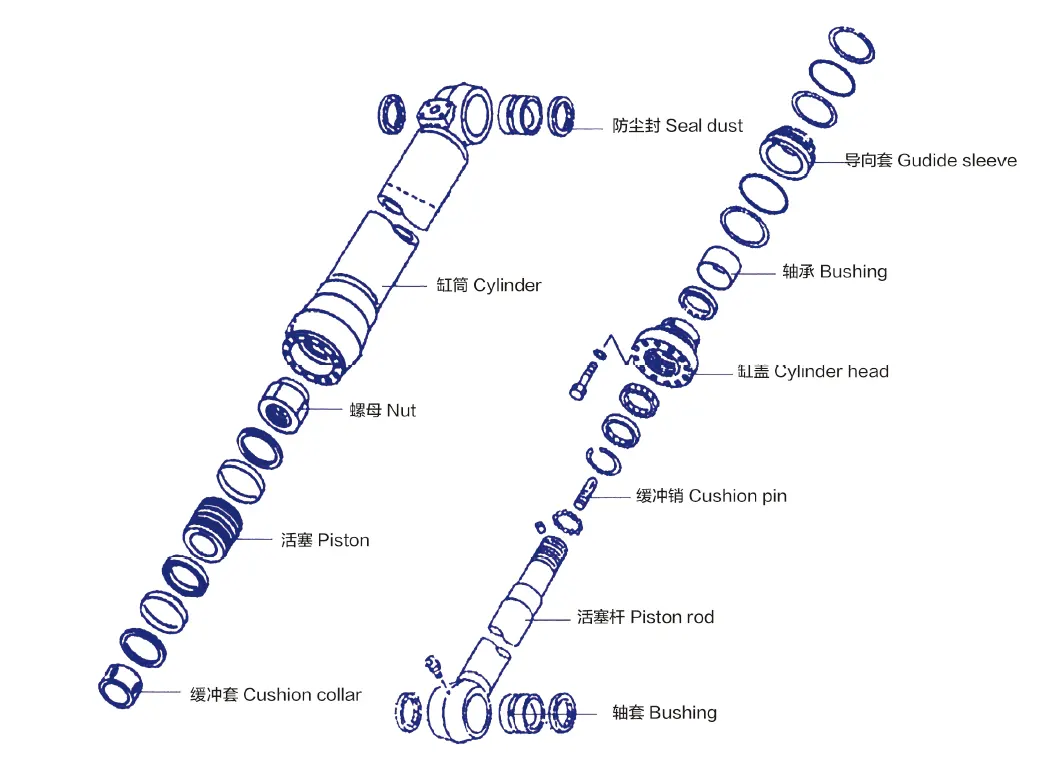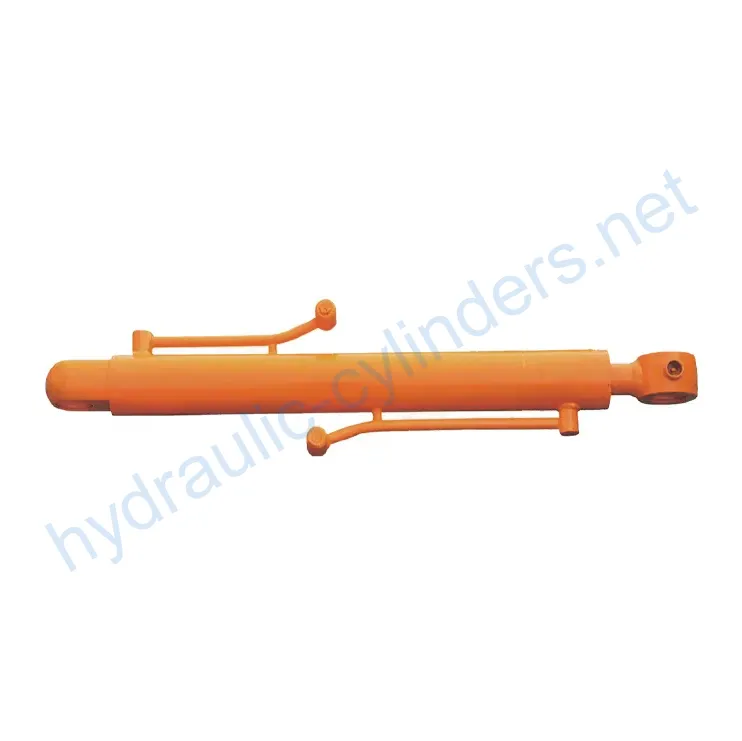Bucket Cylinder For World Small Excavator W235
Bucket Cylinder For World Small Excavator W235
Introduction
The bucket cylinder, also known as a hydraulic cylinder, is a specially designed hydraulic actuator that primarily controls the movement of the bucket in heavy machinery such as excavators, backhoes, and front loaders. Its main function is to lift, lower and tilt the bucket, making it easier to handle various material-handling tasks. In the hydraulic system, the bucket cylinder precisely controls the bucket’s movement by changing the pressure of hydraulic oil, enabling operators to handle heavy objects efficiently and adapt to complex work environments and diverse job requirements.

Features
- High strength and durability: Usually made of high-strength steel or aluminum, it can withstand high pressure and heavy loads, adapting to harsh working environments. The design also considers wear resistance and corrosion resistance, prolonging its service life.
- Efficient hydraulic operation: Utilizing hydraulic oil pressure to achieve smooth extension and contraction movements, it can quickly respond to control commands, providing powerful pushing and pulling forces suitable for handling heavy objects and complex job tasks.
- Diverse types: Single-acting (using hydraulic in only one direction) or double-acting (using hydraulic in both directions) cylinders can be selected according to requirements to meet different operational needs. Some models are telescopic, allowing for greater extension without increasing external dimensions, suitable for limited space applications.
- Interchangeability: Our products can perfectly replace these hydraulic cylinders.

Applications
The bucket cylinder has wide applications in various industries such as:
- Construction Equipment: The bucket cylinder is crucial in excavators for digging, loading, and moving soil or debris. In backhoes, it helps with both digging and lifting.
- Agricultural Machinery: Used for front-end loaders, it picks up, lifts, and transports soil, hay, and other materials. In excavators, the bucket cylinder allows the bucket to penetrate the soil during excavation.
- Loader: In front loaders, it helps with tilting and dumping cargo efficiently.
Design Considerations and Selection Standards
When designing bucket cylinders, several factors must be considered, including:
- Load-carrying capacity: Bucket cylinders must have a load-carrying capacity sufficient to handle the weight of the material being moved and any external forces acting on the bucket.
- Sealing: Various seals, such as piston seals and rod seals, are used to prevent oil leakage and prevent the entry of contaminants.
- Durability: The cylinder must be designed to withstand the harsh environmental conditions and resist wear and corrosion.
- Safety: The bucket cylinder must be designed with safety features to prevent accidents and ensure operator safety.
- Maintainability: The cylinder must be designed to be easily maintainable and repairable, reducing downtime and maintenance costs.

Sealing and Lubrication
Bucket cylinders use various seals such as piston seals and rod seals to prevent oil leakage and prevent the entry of contaminants. The seals are made of wear-resistant materials such as polyurethane and nitrile rubber. The cylinder body and thread end surface are finely processed to improve wear resistance. Proper lubrication with hydraulic oil is required to ensure the smooth operation of the bucket cylinder.
Maintenance
To ensure the longevity and efficient operation of the bucket cylinder, regular maintenance is crucial. Some common maintenance tasks include:
- Regular checks of the cylinder’s condition and performance.
- Lubrication of the cylinder to ensure smooth operation.
- Replacement of worn-out seals.
- Calibration checks to ensure proper operation.
- Regular inspection and cleaning of the cylinder’s external parts.

Safety and Environmental Considerations
Proper safety precautions must be taken when operating a bucket cylinder to prevent accidents and ensure operator safety. It is also essential to consider environmental factors such as oil leaks and spills and proper disposal of hydraulic oil and other waste materials.
Troubleshooting and Common Problems
Bucket cylinders are prone to various problems such as oil leaks, damaged seals, and malfunctioning valves. It is crucial to diagnose and solve these problems promptly to prevent downtime and costly repairs. Proper preventive measures such as regular maintenance and inspection can also reduce potential problems.

About Our Company
We are a leading manufacturer and wholesale distributor of hydraulic cylinders, including bucket cylinders. We follow the principles of excellent quality and rely on the industrial production management strategy of a sophisticated manufacturing workshop. Our company continuously improves its manufacturing platforms, perfects product quality production lines, and has strong creative and efficient capabilities to meet the diverse needs of customers. We offer professional, international, and customized services, have advanced production equipment, and provide after-sales service.

Our company also offers:
- Professionalism: We have a team of experts with years of experience in the field of hydraulic cylinders.
- International certification: Our products have received international certifications such as CE and ISO.
- Customization services: We provide custom hydraulic cylinder solutions to meet specific customer requirements.
- Production equipment: We have advanced production equipment such as CNC machines, welding machines, and honing machines.
- After-sales service: We provide after-sales service, including repair and parts replacement.
Author: lyl.
参观我们的 VR 工厂
通过以下方式参观我们的 VR 工厂
叉车液压缸如何工作?
液压缸应用:


